Windows need regular cleaning, which is why window washing is a $2 billion industry in the US, and a legit business opportunity. In addition, the market saw nearly 7% growth in 2021 as the economy began to revive following the pandemic.
While you don’t need a college degree or business experience, to succeed in window washing you do need a well-thought-out plan and a willingness to work hard. Fortunately, you’ve come to the right place.
This step-by-step guide will walk you through the development and launch process to put you well on your way to window washing success!
Let the journey begin.
Step 1: Decide if the Business Is Right for You
Once you know the market, you can identify growth opportunities and work out strategies to better package your window services. But first, let’s dive into some pros and cons of the window washing industry.
Pros and cons
Your path to success starts by knowing the pros and cons of launching a professional window cleaning service.
Pros
- Simple business model
- Relatively low risk
- High profit margins
- Low startup costs
- No training necessary
Cons
- Seasonal work in most places
- Highly competitive industry
Window washing industry trends
Industry size and growth
Trends and challenges
The latest industry trends include:
- Drone-powered cleaning – Small drones that can fly for up to thirty minutes may soon hold the key to cleaning skyscrapers and hard-to-reach windows.
- Robot window cleaning – While robot window cleaning is already happening, it is yet to become mainstream. Still, we’ll likely see robots taking on more window cleaning tasks in the future.
- Use of green cleaning solutions
Some of the challenges are:
- High risk of accidents
- Stiff competition
What kind of people work in window cleaning?
How much does it cost to start a window washing business?
You don’t need a ton of cash to start a window cleaning service. In fact, you can get started with as little as $2,000 if you’re working alone and have a truck. If you don’t have a truck, set aside an extra $2,000 to $5,000 to help you get started. Here’s an example of what you’ll need:
| Start-up Costs | Ballpark Range | Average |
| Setting up a business name and corporation | $150 - $200 | 175 |
| Business licenses and permits | $100 - $300 | 200 |
| Business cards and brochures | $200 - $300 | 250 |
| Used truck | $2,000 - $5,000 | 3500 |
| Tools, gear, and supplies | $1,000 - $2,000 | $1,500 |
| Insurance | $300 - $1,000 | 650 |
| Website setup | $1,000 - $3,000 | 2000 |
| Total | $4,750 - $11,800 | $8,275 |
How much can you earn from a window cleaning business?
Here’s a breakdown of how much your window cleaning business can make based on various pricing models:
- Residence cleaning – $180 – $600 depending on home’s window surface area
- Timed cleaning – $40 to $75 per hour
- Job size – $4 – $10 per pane
Window washers earn anywhere from $1,800 to $8,000 per month, depending on the type of cleaning job, pricing model, level of expertise and reputation.
In your first year or two, you could work from home and earn $1,800 per month, bringing in almost $22,000 in annual revenue. This would mean around $20,000 in profit, assuming a 90% margin. As you gain more experience, your income could increase to $60,000 a year. At this stage, you’d rent a commercial space and hire staff, reducing your profit margin to around 40%. You’d still make a profit of $24,000.
What barriers to entry are there?
The window cleaning industry is relatively easy to enter. The startup capital is low, and you don’t need formal educational or professional training to get started.
However, not everyone who starts a cleaning company can turn it into a thriving business. Some of the challenges you’re likely to encounter when starting include:
- Finding and keeping good workers
- Hard to build a brand, draw customer base
Related Business Ideas
If you’re still not sure whether this business idea is the right choice for you, here are some related business opportunities to help you on your path to entrepreneurial success.
Step 2: Hone Your Idea
With the basics out of the way, it’s time to take this up a notch.
Why? Identify an opportunity
Window cleaning is a highly competitive market primarily due to few entry barriers. Your direct competition will be established local cleaning companies, big and small. Examine their service offerings and prices to get an idea of what works well among your target market.
To gain a competitive advantage, look to identify market gaps and fill them. You can, for instance, leverage the latest window cleaning technology such as telescopic poles, robots or drones to stand out.
You’ll also want to offer excellent customer service to make you the go-to cleaner in your area of service.
What? Determine your products or services
You should consider creating a niche for yourself by specializing in a certain aspect of your industry. This could jumpstart your word-of-mouth marketing within your niche market.
A window cleaner’s duties and responsibilities include:
- Washing windows on high rise and low rise buildings
- Working on ladders up to 32 feet
- Assembling and disassembling scaffolding as needed
- Operating a power washer
Cleaning windows can start as early as 8am and end after 6pm, depending on your customer’s schedule. And you may also have to work weekends.
How much should you charge for window cleaning?
The standard rate for residential window cleaning is $10 to $15 per window. Most commercial window cleaners charge an average of $250 for a property 1,500 square foot in size, or about $40 to $75 per hour.
While these are the typical industry rates, you can choose your rates depending on location, target customer, and cleaning tools.
Once you know your costs, you can use this Step By Step profit margin calculator to determine your mark-up and final price points. Remember, the prices you use at launch should be subject to change if warranted by the market.
Who? Identify your target market
Your target market is the group of customers to whom you plan to sell your services. Target customers are the pillars of your business. They’ll influence your marketing strategy and services you’ll offer.
Ideally, you’ll want to target people and businesses that can afford your window cleaning services. These will include homeowners in high-end suburbs, offices, hospitals, and restaurants.
Your location may also determine who to target. The closer your ideal customer is to you, the better.
Where? Choose your business premises
In the early stages, you may want to run your business from home to keep costs low. But as your business grows, you’ll likely need to hire workers for various roles and may need to rent out an office. You can find commercial space to rent in your area on sites such as Crexi and Instant Offices.
When choosing a commercial space, you may want to follow these rules of thumb:
- Central location accessible via public transport
- Ventilated and spacious, with good natural light
- Flexible lease that can be extended as your business grows
- Ready-to-use space with no major renovations or repairs needed
Step 3: Brainstorm a Business Name
Your business name is your business identity, so choose one that encapsulates your objectives, services, and mission in just a few words. You probably want a name that’s short and easy to remember, since much of your business, and your initial business in particular, will come from word-of-mouth referrals.
Here are some ideas for brainstorming your business name:
- Short, unique, and catchy names tend to stand out
- Names that are easy to say and spell tend to do better
- The name should be relevant to your product or service offerings
- Ask around — family, friends, colleagues, social media — for suggestions
- Including keywords, such as “windows” or “cleaning”, boosts SEO
- Choose a name that allows for expansion: “Jim’s Bakery” over “Jim’s Cookies”
- Avoid location-based names that might hinder future expansion
- Use online tools like the Step by Step business name generator. Just type in a few keywords and hit “generate” and you’ll have dozens of suggestions at your fingertips.
Once you’ve got a list of potential names, visit the website of the US Patent and Trademark Office to make sure they are available for registration and check the availability of related domain names using our Domain Name Search tool. Using “.com” or “.org” sharply increases credibility, so it’s best to focus on these.
Finally, make your choice among the names that pass this screening and go ahead with domain registration and social media account creation. Your business name is one of the key differentiators that sets your business apart. Once you pick your company name, and start with the branding, it is hard to change the business name. Therefore, it’s important to carefully consider your choice before you start a business entity.
Step 4: Create a Business Plan
Every business needs a plan. This will function as a guidebook to take your startup through the launch process and maintain focus on your key goals. A business plan also enables potential partners and investors to better understand your company and its vision:
- Executive Summary: Brief overview of the entire business plan; should be written after the plan is complete.
- Business Overview: Overview of the company, vision, mission, ownership, and corporate goals.
- Product and Services: Describe your cleaning services in detail.
- Market Analysis: Assess market trends such as variations in demand and prospects for growth, and do a SWOT analysis.
- Competitive Analysis: Analyze main competitors, assessing their strengths and weaknesses, and create a list of the advantages of your services.
- Sales and Marketing: Examine your companies’ unique selling propositions (USPs) and develop sales, marketing, and promotional strategies.
- Management Team: Overview of management team, detailing their roles and professional background, along with a corporate hierarchy.
- Operations Plan: Your company’s operational plan includes procurement, office location, key assets and equipment, and other logistical details.
- Financial Plan: Three years of financial planning, including startup costs, break-even analysis, profit and loss estimates, cash flow, and balance sheet.
- Appendix: Include any additional financial or business-related documents.
If you’ve never created a business plan, it can be an intimidating task. You might consider hiring a business plan specialist at Fiverr to create a top-notch business plan for you.
Step 5: Register Your Business
Registering your business is an absolutely crucial step — it’s the prerequisite to paying taxes, raising capital, opening a bank account, and other guideposts on the road to getting a business up and running.
Plus, registration is exciting because it makes the entire process official. Once it’s complete, you’ll have your own business!
Choose where to register your company
Your business location is important because it can affect taxes, legal requirements, and revenue. Most people will register their business in the state where they live, but if you are planning to expand, you might consider looking elsewhere, as some states could offer real advantages when it comes to window cleaning.
If you’re willing to move, you could really maximize your business! Keep in mind, it’s relatively easy to transfer your business to another state.
Choose your business structure
Business entities come in several varieties, each with its pros and cons. The legal structure you choose for your window cleaning business will shape your taxes, personal liability, and business registration requirements, so choose wisely.
Here are the main options:
- Sole Proprietorship – The most common structure for small businesses makes no legal distinction between company and owner. All income goes to the owner, who’s also liable for any debts, losses, or liabilities incurred by the business. The owner pays taxes on business income on his or her personal tax return.
- General Partnership – Similar to a sole proprietorship, but for two or more people. Again, owners keep the profits and are liable for losses. The partners pay taxes on their share of business income on their personal tax returns.
- Limited Liability Company (LLC) – Combines the characteristics of corporations with those of sole proprietorships or partnerships. Again, the owners are not personally liable for debts.
- C Corp – Under this structure, the business is a distinct legal entity and the owner or owners are not personally liable for its debts. Owners take profits through shareholder dividends, rather than directly. The corporation pays taxes, and owners pay taxes on their dividends, which is sometimes referred to as double taxation.
- S Corp – An S-Corporation refers to the tax classification of the business but is not a business entity. An S-Corp can be either a corporation or an LLC, which just need to elect to be an S-Corp for tax status. In an S-Corp, income is passed through directly to shareholders, who pay taxes on their share of business income on their personal tax returns.
We recommend that new business owners choose LLC as it offers liability protection and pass-through taxation while being simpler to form than a corporation. You can form an LLC in as little as five minutes using ZenBusiness’s online LLC formation service. They will check that your business name is available before filing, submit your articles of organization, and answer any questions you might have.
Step 6: Register for Taxes
The final step before you’re able to pay taxes is getting an Employer Identification Number, or EIN. You can file for your EIN online or by mail or fax: visit the IRS website to learn more. Keep in mind, if you’ve chosen to be a sole proprietorship you can simply use your social security number as your EIN.
Once you have your EIN, you’ll need to choose your tax year. Financially speaking, your business will operate in a calendar year (January–December) or a fiscal year, a 12-month period that can start in any month. This will determine your tax cycle, while your business structure will determine which taxes you’ll pay.
It is important to consult an accountant or other professional to help you with your taxes to ensure you are completing them correctly.
Step 7: Fund your Business
Securing financing is your next step and there are plenty of ways to raise capital:
- Bank loans: This is the most common method, but getting approved requires a rock-solid business plan and strong credit history.
- SBA-guaranteed loans: The Small Business Administration can act as guarantor, helping gain that elusive bank approval via an SBA-guaranteed loan.
- Government grants: A handful of financial assistance programs help fund entrepreneurs. Visit Grants.gov to learn which might work for you.
- Venture capital: Offer potential investors an ownership stake in exchange for funds, keeping in mind that you would be sacrificing some control over your business.
- Friends and Family: Reach out to friends and family to provide a business loan or investment in your concept. It’s a good idea to have legal advice when doing so because SEC regulations apply.
- Crowdfunding: Websites like Kickstarter and Indiegogo offer an increasingly popular low-risk option, in which donors fund your vision. Entrepreneurial crowdfunding sites like Fundable and WeFunder enable multiple investors to fund your business.
- Personal: Self-fund your business via your savings or the sale of property or other assets.

Bank and SBA loans are probably the best option, other than friends and family, for funding a window washing business.
Step 8: Apply for Licenses/Permits
Starting a window washing business requires obtaining a number of licenses and permits from local, state, and federal governments.
Federal regulations, licenses, and permits associated with starting your business include doing business as (DBA), health licenses and permits from the Occupational Safety and Health Administration (OSHA), trademarks, copyrights, patents, and other intellectual properties, as well as industry-specific licenses and permits.
You may also need state-level and local county or city-based licenses and permits. The license requirements and how to obtain them vary, so check the websites of your state, city, and county governments or contact the appropriate person to learn more.
You could also check this SBA guide for your state’s requirements, but we recommend using MyCorporation’s Business License Compliance Package. They will research the exact forms you need for your business and state and provide them to ensure you’re fully compliant.
This is not a step to be taken lightly, as failing to comply with legal requirements can result in hefty penalties.
If you feel overwhelmed by this step or don’t know how to begin, it might be a good idea to hire a professional to help you check all the legal boxes.
Step 9: Open a Business Bank Account
Before you start making money you’ll need a place to keep it, and that requires opening a bank account.
Keeping your business finances separate from your personal account makes it easy to file taxes and track your company’s income, so it’s worth doing even if you’re running your window cleaning business as a sole proprietorship. Opening a business bank account is quite simple, and similar to opening a personal one. Most major banks offer accounts tailored for businesses — just inquire at your preferred bank to learn about rates and features.
Banks vary in terms of offerings, so it’s a good idea to examine your options and select the best plan for you. Once you choose your bank, bring in your EIN (or Social Security Number if you decide on a sole proprietorship), articles of incorporation, and other legal documents and open your new account.
Step 10: Get Business Insurance
Business insurance is an area that often gets overlooked yet it can be vital to your success as an entrepreneur. Insurance protects you from unexpected events that can have a devastating impact on your business.
Here are some types of insurance to consider:
- General liability: The most comprehensive type of insurance, acting as a catch-all for many business elements that require coverage. If you get just one kind of insurance, this is it. It even protects against bodily injury and property damage.
- Business Property: Provides coverage for your equipment and supplies.
- Equipment Breakdown Insurance: Covers the cost of replacing or repairing equipment that has broken due to mechanical issues.
- Worker’s compensation: Provides compensation to employees injured on the job.
- Property: Covers your physical space, whether it is a cart, storefront, or office.
- Commercial auto: Protection for your company-owned vehicle.
- Professional liability: Protects against claims from a client who says they suffered a loss due to an error or omission in your work.
- Business owner’s policy (BOP): This is an insurance plan that acts as an all-in-one insurance policy, a combination of any of the above insurance types.
Step 11: Prepare to Launch
As opening day nears, prepare for launch by reviewing and improving some key elements of your business.
Essential software and tools
Being an entrepreneur often means wearing many hats, from marketing to sales to accounting, which can be overwhelming. Fortunately, many websites and digital tools are available to help simplify many business tasks.
You may want to use software like Connecteam, Jobber, and The Service Program to help you track customers, manage dispatches, schedule appointments, and handle billing and invoicing.
Accounting
- Popular web-based accounting programs for smaller businesses include Quickbooks, Freshbooks, and Xero.
- If you’re unfamiliar with basic accounting, you may want to hire a professional, especially as you begin. The consequences for filing incorrect tax documents can be harsh, so accuracy is crucial.
Marketing
Some of your business will come from the casual passerby or online visitors, but still, you should invest in digital marketing! Getting the word out is especially important for new businesses, as it’ll boost customer and brand awareness.
Once your website is up and running, link it to your social media accounts and vice versa. Social media is a great tool for promoting your business because you can create engaging posts that advertise your products:
- Facebook: Great platform for paid advertising, allows you to target specific demographics, like men under age 50 in the Cleveland area.
- Instagram: Same benefits as Facebook but with different target audiences.
- Website: SEO will help your website appear closer to the top in relevant search results, a crucial element for increasing sales. Make sure that you optimize calls to action on your website. Experiment with text, color, size, and position of calls to action such as “Call Us Now”. This can sharply increase the number of customers.
- Google and Yelp: For businesses that rely on local clientele, getting listed on Yelp and Google My Business can be crucial to generating awareness and customers.
Kickstart Marketing
Take advantage of your website, social media presence and real-life activities to increase awareness of your offerings and build your brand. Some suggestions include:
- Competitions and giveaways – Generate interest by offering prizes for customers who complete a certain action, such as a 10% discount for being the 10th cleaning that week.
- Signage – Put up eye-catching signage at your store and website.
- Flyering – Distribute flyers in your neighborhood and at industry events.
- In-Person Sales – Offer your products/services at local markets, trade shows.
- Post a video – Post a video about your window washing business. Use humor and maybe it will go viral!
- Seek out referrals – Offer incentives to generate customer referrals to new clients.
- Paid ads on social media – Choose sites that will reach your target market and do targeted ads.
- Create infographics – Post infographics and include them in your content.
Develop your website
Website development is crucial because your site is your online presence and needs to convince prospective clients of your expertise and professionalism. They are unlikely to find your website, however, unless you follow Search Engine Optimization (SEO) practices. These are steps that help pages rank higher in the results of top search engines like Google.
You can create your own website using services like WordPress, Wix, or Squarespace. This route is very affordable, but figuring out how to build a website can be time-consuming. If you lack tech-savvy, you can hire a web designer or developer to create a custom website for your business.
Focus on USPs
Unique selling propositions, or USPs, are the characteristics of a product or service that sets it apart from the competition. Customers today are inundated with buying options, so you’ll have a real advantage if they are able to quickly grasp how your window washing business meets their needs or wishes. It’s wise to do all you can to ensure your USPs stand out on your website and in your marketing and promotional materials, stimulating buyer desire.
Global pizza chain Domino’s is renowned for its USP: “Hot pizza in 30 minutes or less, guaranteed.” Some signature USPs for your window washing business could be:
- Fastest window cleaning in town
- Best prices for window washing
- Advanced tech means better cleaning
- Discounted subscription model for regular cleanings
Networking
You may not like to network or use personal connections for business gain. But your personal and professional networks likely offer considerable untapped business potential. Maybe that Facebook friend you met in college is now running a window washing business, or a LinkedIn contact of yours is connected to dozens of potential clients. Maybe your cousin or neighbor has been working in window cleaning for years and can offer invaluable insight and industry connections.
The possibilities are endless, so it’s a good idea to review your personal and professional networks and reach out to those with possible links to or interest in window washing. You’ll probably generate new customers or find companies with which you could establish a partnership. Online businesses might also consider affiliate marketing as a way to build relationships with potential partners and boost business.
Step 12: Build Your Team
If you’re starting out small from a home office, you may not need any employees. But as your business grows, you will likely need workers to fill various roles. Potential positions for a window cleaning business would include:
- Window Washers
- General Manager
- Marketing and Sales Lead
At some point, you may need to hire all of these positions or simply a few, depending on the size and needs of your business. You might also hire multiple workers for a single role or a single worker for multiple roles, again depending on need.
Free-of-charge methods to recruit employees include posting ads on popular platforms such as LinkedIn, Facebook, or Jobs.com. You might also consider a premium recruitment option, such as advertising on Indeed, Glassdoor, or ZipRecruiter. Further, if you have the resources, you could consider hiring a recruitment agency to help you find talent.
Step 13: Start Making Money!
A day in the life of a window cleaner involves scheduling visits, canvassing jobs, calling clients, stocking inventory, and maintaining equipment. To land clients consistently, you need to be excellent at sales and customer service, as well as washing windows. For that last task, you’ll need some physical stamina. It’s also wise to keep up with the latest trends, such as the growing consumer preference for environment-friendly cleaning solutions.
You’re now ready to start your entrepreneurial journey and make good money. With hard work, your window washing business should be well on its way to success!
Window Washing Business FAQs
Is window cleaning profitable?
The window washing business is lucrative. In fact, starting a window cleaning business is one of the easiest ways to make a decent income within a short period. Plus, the startup cost is low, and you don’t need formal training to get your service up and running.
What does professional window cleaning include?
Professional window cleaning involves knowing how to access both ground and high-rise windows safely. It also includes removing window screens, cleaning, and fixing them properly.
As a professional window cleaner, it is also your job to remove debris, bug deposits, and stucco from glass using special tools and equipment.
What is the fastest way to get window cleaning customers?
One of the quickest ways to land your first window cleaning gig is pitching prospects door to door. When doing this, you need to tell potential clients what makes your service different and why they should hire you. You can also suggest why prospects need to clean their windows regularly.


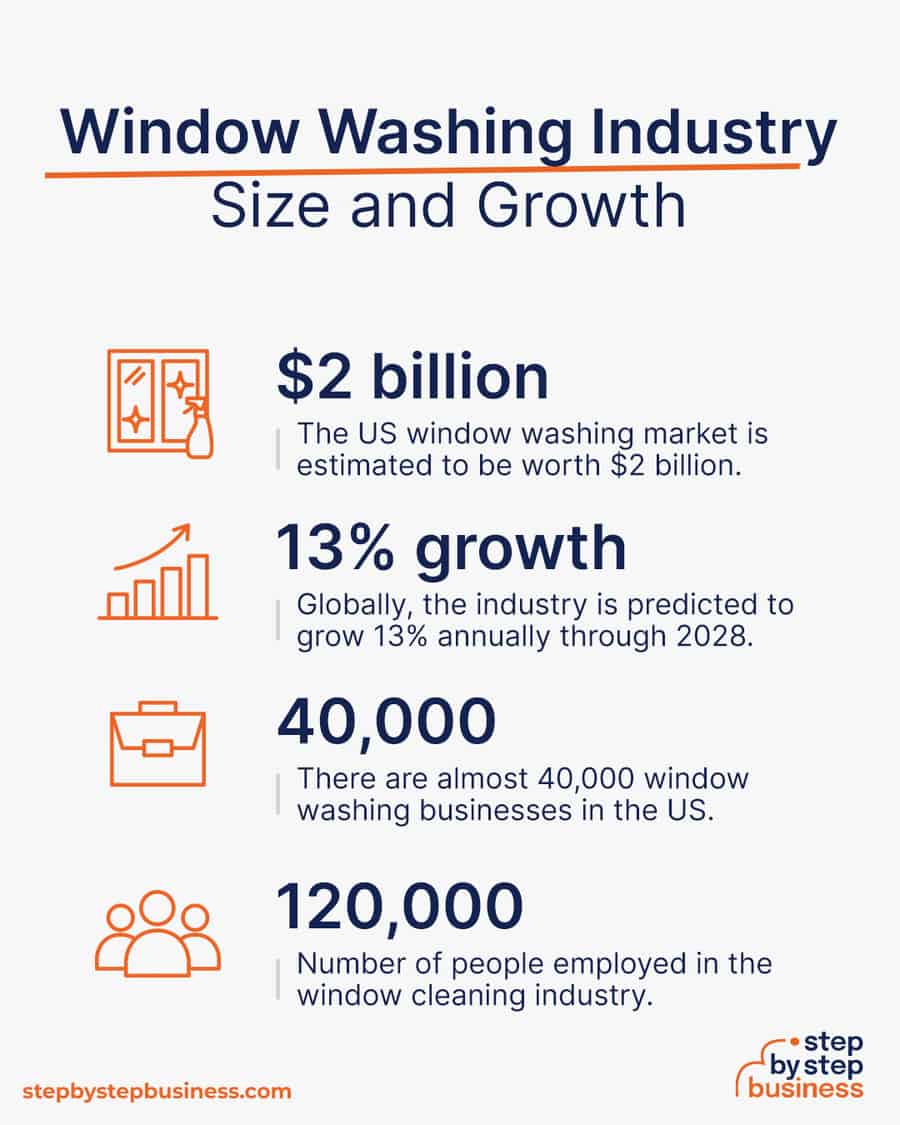
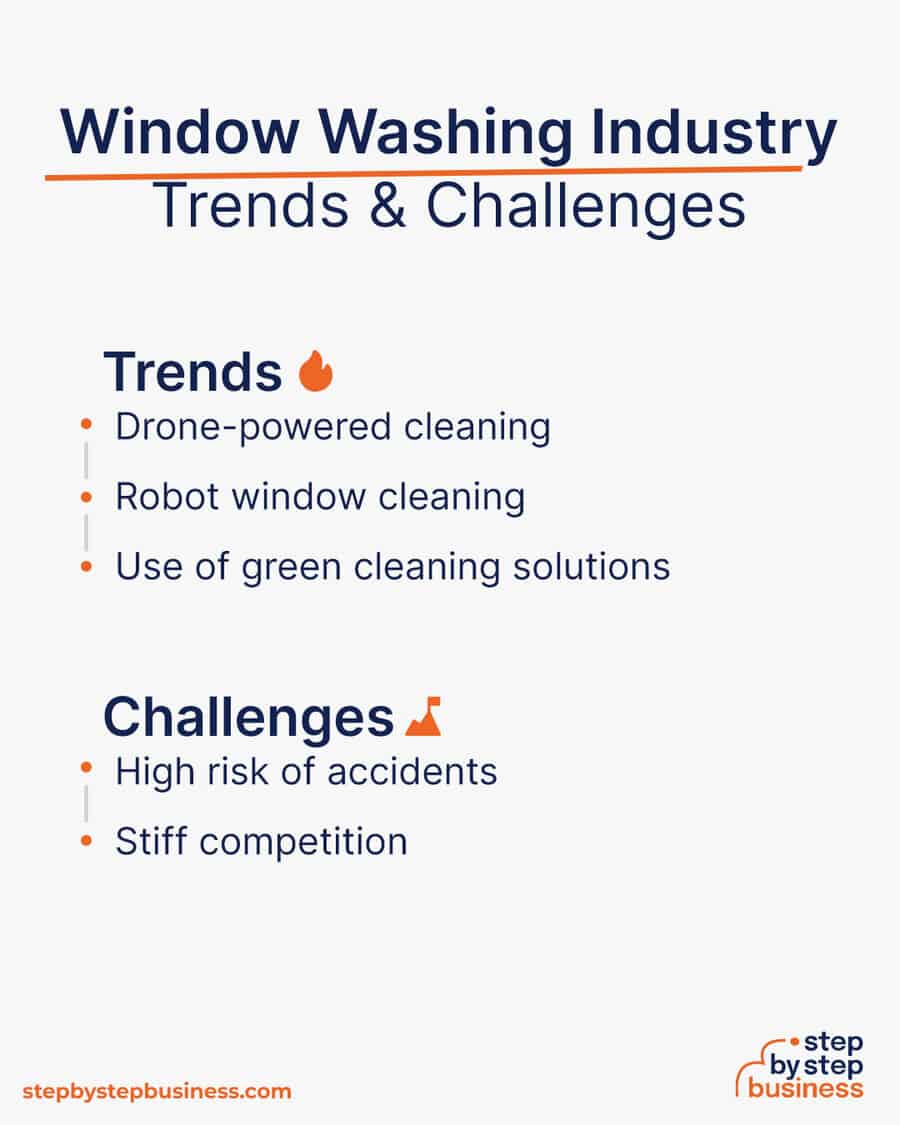
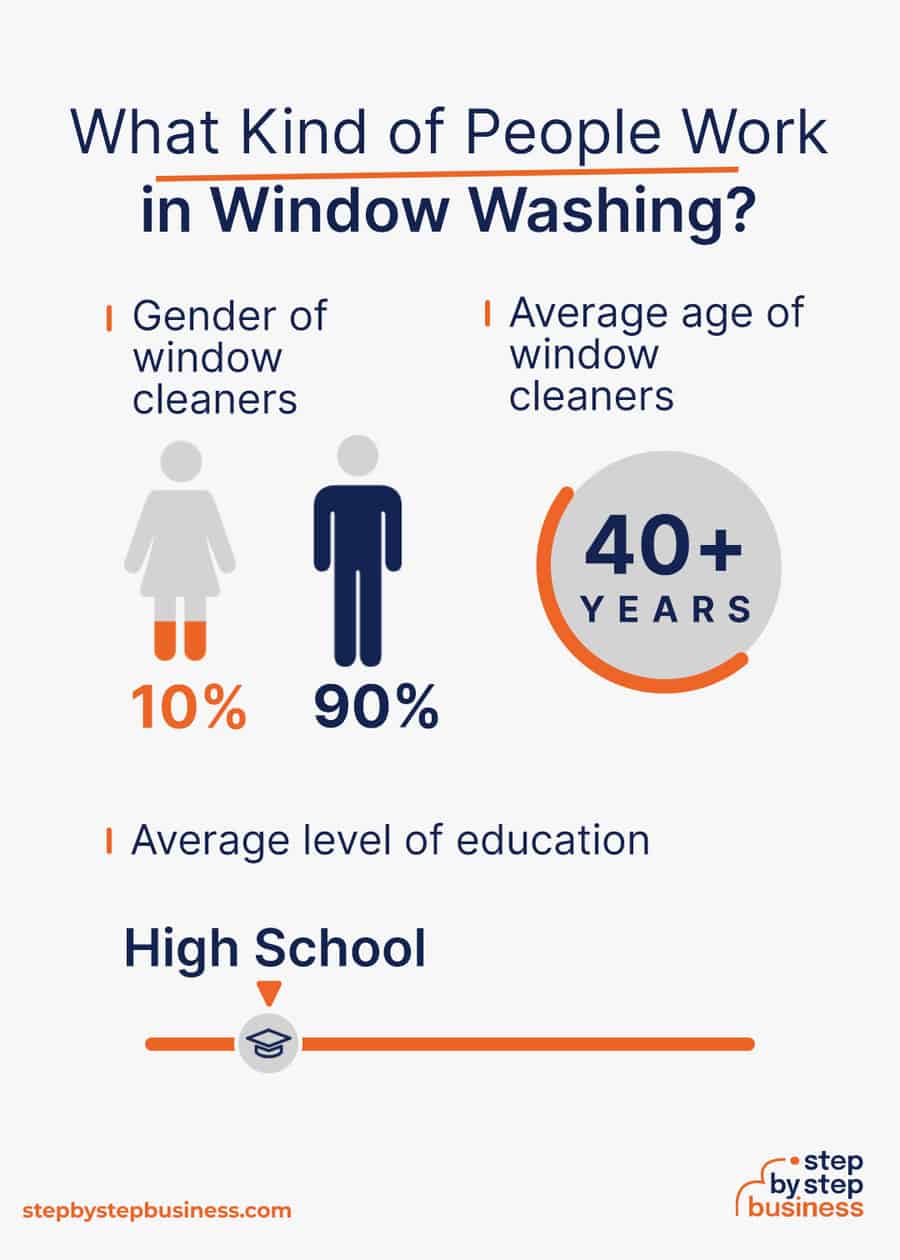
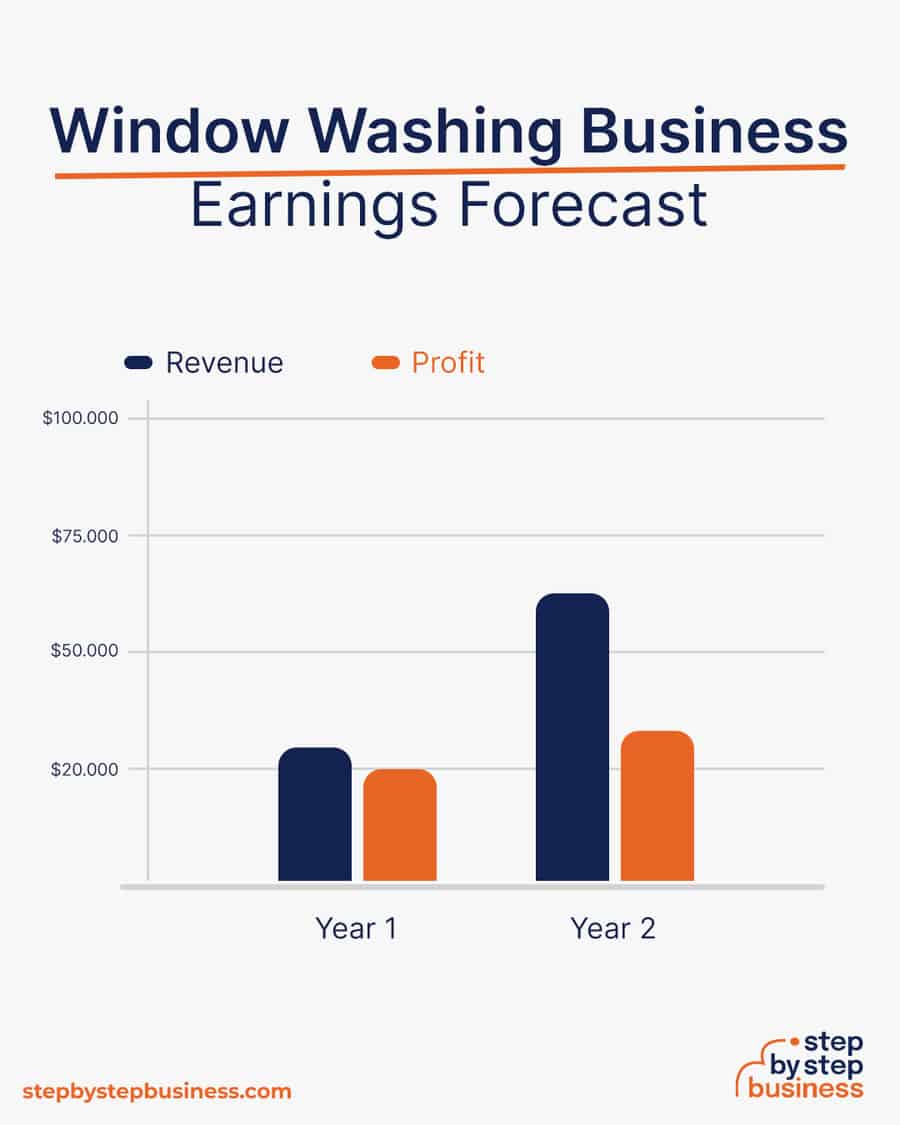


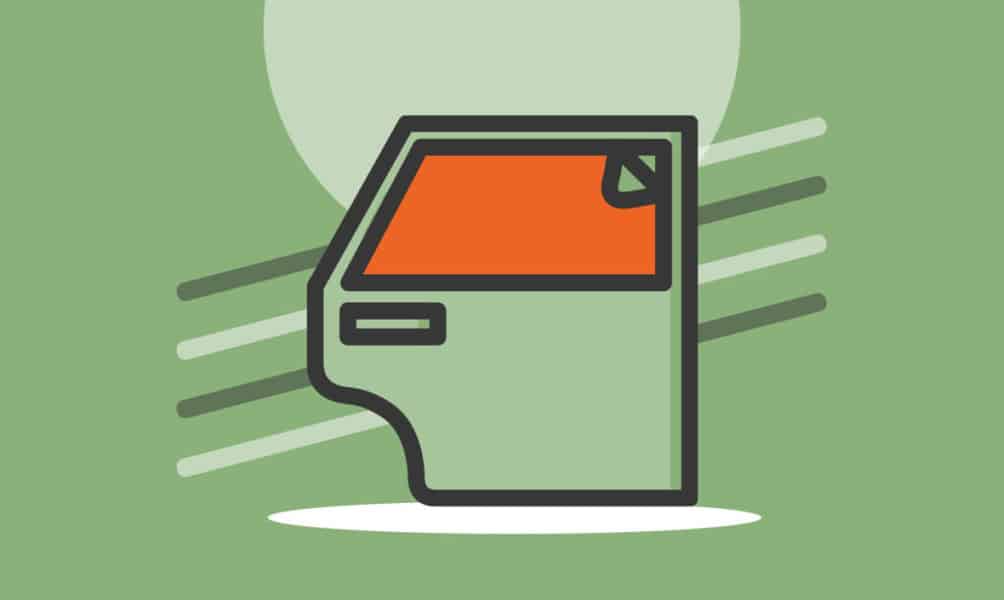

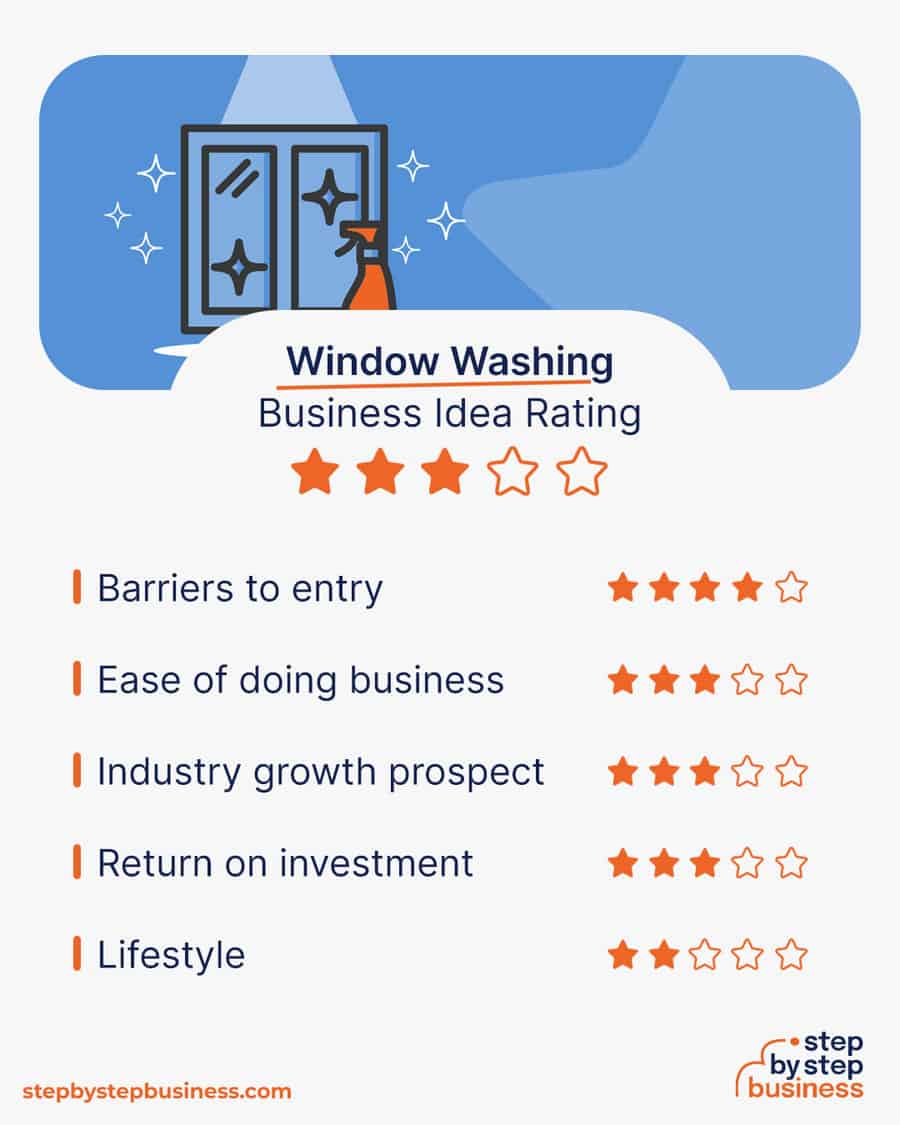













Comments